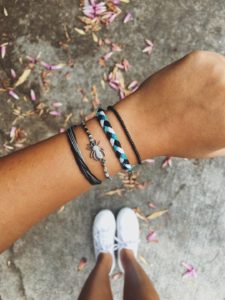Samar was only 14 years old and the CEO of Elementeo, which he created himself. Combining his passions for games and chemistry, Samar created this board-based game with the intention of educating its players in the field of chemistry. Each card in the game represents either a field or principle of chemistry or a specific element with its relevant characteristics. Since its first inception, Samar has received a number of grants to work on his project and sold a number of the finish products. He since worked to branch out, increasing the versatility of the game and adjusting it to make it more relevant to different age groups.
The two aspects of Anshul’s venture which are both vital in aiding effective entrepreneurship are these: he started from a subject he enjoyed and brought together two seemingly unrelated fields because they were both passions of his he also worked with an intention of helping others which is often a great motivation for finding problems which truly have marketable solutions and serving as motivation to complete a venture.


Here is a link to an interview with the young entrepreneur concerning his venture:
Interview with Anshul Samar on Elementeo’s launch, and being a teenage CEO




 As a homeschooler, Natalie and her family had to buy all of their books themselves, and as there was no curated or organized way to buy used book, they usually ended up buying these books new from publishers, which got very expensive. However, Natalie noticed that after he finished with a book, it just stayed on her bookshelf until it either was given away to a family friend or sold at a significantly reduced price at a yard sale. Natalie considered how wasteful this was, both on the buying end and the reselling end because there was no organized platform for homeschoolers to interact with each other in this manner. Out of this pain came her idea of Hoot Book Revival, which is an app and website on which homeschoolers can resell their books and buy used books from other homeschooling families at a reduced cost. This benefits both the buyer and the seller, because people looking to buy books can get them much cheaper than they can new books, and people looking to sell books can sell them for more than they could at a yard sale.
As a homeschooler, Natalie and her family had to buy all of their books themselves, and as there was no curated or organized way to buy used book, they usually ended up buying these books new from publishers, which got very expensive. However, Natalie noticed that after he finished with a book, it just stayed on her bookshelf until it either was given away to a family friend or sold at a significantly reduced price at a yard sale. Natalie considered how wasteful this was, both on the buying end and the reselling end because there was no organized platform for homeschoolers to interact with each other in this manner. Out of this pain came her idea of Hoot Book Revival, which is an app and website on which homeschoolers can resell their books and buy used books from other homeschooling families at a reduced cost. This benefits both the buyer and the seller, because people looking to buy books can get them much cheaper than they can new books, and people looking to sell books can sell them for more than they could at a yard sale. When I asked Natalie about how this business came about and what need it was filling, she said, “I suppose the core of the business idea was identifying an underrepresented group, and how their market needs weren’t being addressed, because the business pitch itself is pretty simple.” Natalie’s website allows the customer to buy and sell books, as well as collaborate with other homeschoolers on which lesson plans and books are best. Hoot Book Revival also has an option where people can post their books and let Hoot do all the work in finding people to sell them to, making the customer experience more enjoyable and less labor intensive.
When I asked Natalie about how this business came about and what need it was filling, she said, “I suppose the core of the business idea was identifying an underrepresented group, and how their market needs weren’t being addressed, because the business pitch itself is pretty simple.” Natalie’s website allows the customer to buy and sell books, as well as collaborate with other homeschoolers on which lesson plans and books are best. Hoot Book Revival also has an option where people can post their books and let Hoot do all the work in finding people to sell them to, making the customer experience more enjoyable and less labor intensive.

